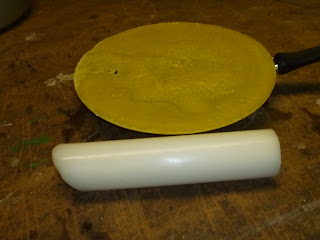So after I added the bars on Saturday, it was still pretty warm. Also, inside is wall to wall bees, packed tight. About 5:30, I noticed the porch bees settling in outside:
There was room inside since I added the bars. However, it was hot. I think they cluster outside to keep inside a little cooler. At the same time, the yard hive had hardly anyone outside:This stimulated some thoughts about their behavior. Somehow, some of the bees decided to stay outside to help with the temperature problem. They were certainly foragers, but how do they decide to do that? Do they feel the heat and decide to stay out? Are the guard bees keeping them from coming in? Collectively they acted for the hive's benefit. This happens in other ways as well. They decide what jobs to do, they decide when the queen is losing her grip and start new ones, they kick out the drones when there are too many or they aren't needed.
There is no leader. The queen is just a single (usually) bee with special skills but the only thing she ever decides is when to swarm (they follow her) if it's actually her who makes the decision. This seeming chaos of tens of thousands of bees performs a variety of tasks and fairly efficiently, although if you watch individual bees, they seem to wander around without a purpose. An individual bee doesn't last long - it soon dies. There is no real existence without the hive, which is why the hive is cosidered the organism, not the bee, and why reproduction is swarming, not the birth of individual bees.
Somehow long ago honeybees evolved to this behavior. Other insects, including bumblebees are solitary, but honey bees decided on a communal effort, like ants and termites. It works for them. The sole purpose for the individual bee is the good of the hive; this even shows in defense when a bee sting is the last thing they do in life.







